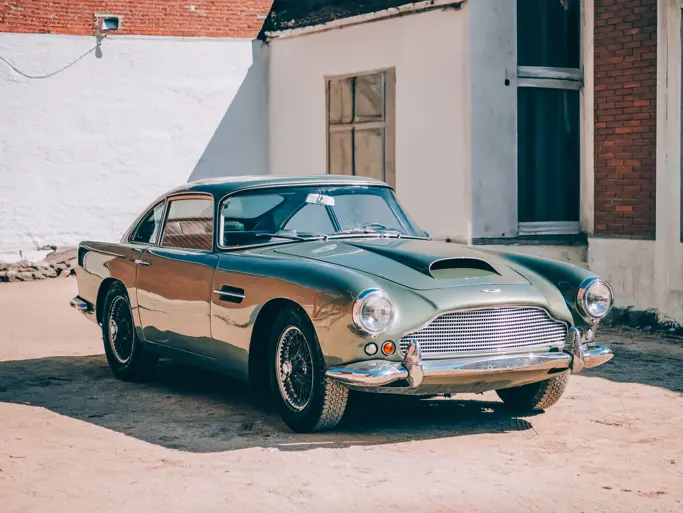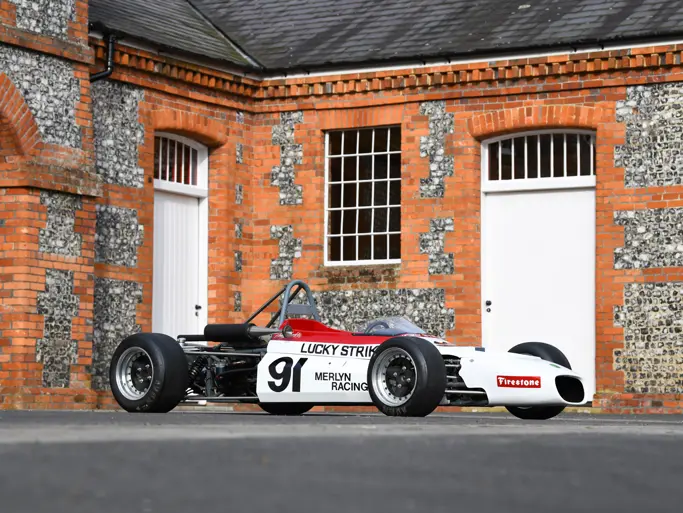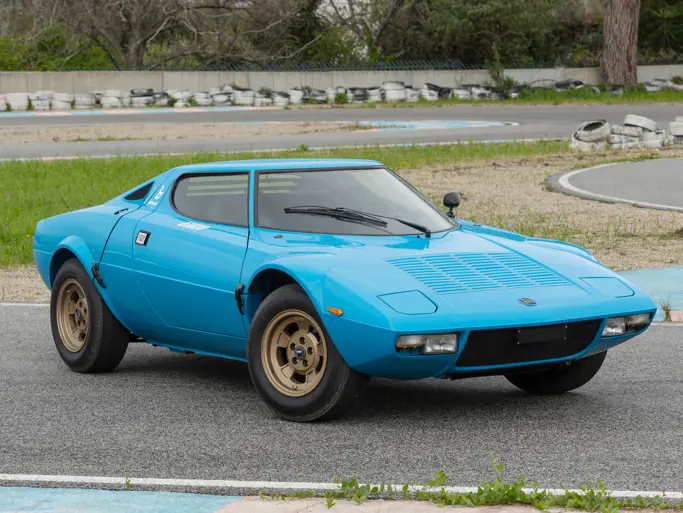London 2014
1967 Ferrari 330 GT 2+2 by Pininfarina
{{lr.item.text}}
£190,400 GBP | Sold
 | London, United Kingdom
| London, United Kingdom
{{internetCurrentBid}}
{{internetTimeLeft}}

- Ferrari Classiche certified and freshly serviced
- Matching-numbers example in very original condition
- Optional A/C, AM/FM radio, power windows, and rare power steering
- Includes original books and tool roll
300 bhp, 3,967 cc SOHC V-12 engine with three Weber 40 DCZ/6 carburettors, five-speed manual gearbox, independent unequal length wishbone front suspension with coil springs, live rear axle with semi-elliptic leaf springs and coil springs with telescopic shock absorbers, and Dunlop dual-circuit four-wheel disc brakes. Wheelbase: 2,650 mm
Even though Enzo Ferrari’s efforts primarily centred around racing cars, it was the sale of road going models to well-heeled, discerning customers that financed those efforts. Customers were eager to have a Ferrari that allowed them to carry three passengers or additional luggage on longer trips. Ferrari sought to update his lucrative grand touring coupé line-up by offering similar performance to its two-seater models. The 330 was conceived as a successor to his marque’s legendary and long-lived 250 series. This symbiotic relationship was obvious once one opened the bonnet of the first 330, the 330 America.
The company’s new Tipo 209 V-12 engine displaced 3,967 cubic centimetres (330 cubic centimetres per cylinder, which gave the car its name) and boasted a slightly longer block than its 400 SA series predecessor. The engine was rated at 300 horsepower, and the 12 cylinders were fed by a trio of Weber 40 DCZ/6 carburettors.
The 330 America was, however, a short-lived placeholder for what was to come: the 330 GT 2+2. This new car was introduced in January 1964 at the Brussels Motor Show, and its design sported a distinctive quad-headlamp arrangement, which was penned by Pininfarina’s noted American designer Tom Tjaarda and was intended to attract American customers. Although today’s enthusiasts find its mid-century look to be quite distinctive, halfway into the 1965 model year the 330 GT 2+2 Series II that hit the market was graced with dual headlights and a nose that mimicked the design of the 275 GTS. Its gorgeous Pininfarina bodywork beautifully reflected the personality of a sporty grand tourer for four.
Mechanical updates to the model were numerous, as the 330 now rode on a two-inch longer wheelbase than the 250 GTE and included such advanced engineering features as Koni adjustable shock absorbers and a Dunlop dual-circuit braking system that gave both the front and rear disc brakes their own servo-assist. A true five-speed gearbox also arrived in 1965 to replace the overdrive unit. Ten-hole cast-alloy knock-off wheels were made standard, whilst the earlier Borrani wire wheels remained optional. Only 455 examples of the handsome Series II 330 GT were built before the more aggressive yet less stately 365 GT arrived in 1967.
The 330 GT offered here completed manufacture on 25 October 1966 with assembly sequence number 969 and Pininfarina body number 0180, and its Certificate of Origin was issued on 19 May 1967. This car, wearing Grigio Fumo (18944 M Italver) over a Pelle Rossa leather (VM 3171) interior, was sold through official Ferrari dealership Italcar S.p.A at 202 Corso Giulio Cesare in Torino to its first owner, Mrs Margherita Ravelli, for 6.5 million Lire. The options fitted to chassis 9177 GT included air conditioning, an AM/FM radio, power windows, and desirable power steering. It was then registered on Torino license plates TO 909293 on 30 May 1967. Mrs Ravelli clearly enjoyed driving the car, as the odometer was already displaying 13,741 kilometres when she had it serviced a year later, on 6 March, by the Ferrari factory’s Assistenza Clienti at Viale Trento Trieste in Modena.
Mr Vincenzo Neri then acquired 9177 GT for 6 million Lire on 5 April 1968. The Ferrari again returned to Modena for a service on 24 May, this time displaying 20,609 kilometres. Neri continued to enjoy the car before selling it on 12 June 1969 to Mark Alexander Pollack, who was using the Automobile Club of Italy in Torino as his address. Shortly after purchasing the car, Pollack sent the car again to the Ferrari factory’s Assistenza Clienti for another service, with it now displaying 22,653 kilometres. The car was later exported to Tryon, North Carolina, by Mr Pollack upon his return to the United States. As the 330 GT left Italy, the original registration plates were cancelled by the Automobile Club of Italy on 30 December 1982.
Mr Pollack maintained the car from 1968 to 1999, when he sold it to Mr Todd Retallack, of Madison Avenue, New York. Retallack enjoyed the car for an additional two years, until the current owner acquired it in February 2001. Even though he has strived to retain the Ferrari’s remarkable, well-preserved condition, 9177 GT has always been enjoyed as its creator intended. The owner has frequently driven this 330 GT throughout the north-eastern United States and, since its importation back to Europe (although it still retains U.S.A. paperwork), across Northern Italy. Interestingly, the car has been recently garaged at 300 Corso Giulio Cesare, just down the road from the original sales showroom.
Chassis 9177 has recently benefitted from a new, period-correct stainless steel exhaust and five new period-correct Pirelli tyres, and it has had both its front and rear suspensions rebuilt. Earlier this year, the car also underwent a complete brake system rebuild by well-respected Ferrari mechanics at Toni Auto in Maranello, Italy, which included rebuilding the brake callipers and adding new shoes and a new slave cylinder. The original engine shows less than 62,000 kilometres and has always been properly and regularly maintained, and the body is rust-free throughout. Its interior still remains in splendid original condition, and it shows the correct amount of patina for its age.
Considering its high level of originality, this 330 GT would make for a wonderful entrant in the Preservation class at a concours event such as Goodwood, which would only help to further embellish the car’s provenance. This car is accompanied by a full set of books, tools, a large file of invoices, and Ferrari Classiche certification, making it a fantastic example of one of Ferrari’s most compelling four-seaters. Chassis 9177 offers its next caretaker the opportunity to experience a beautifully authentic Ferrari that can be both preserved and enjoyed for future generations to appreciate.




